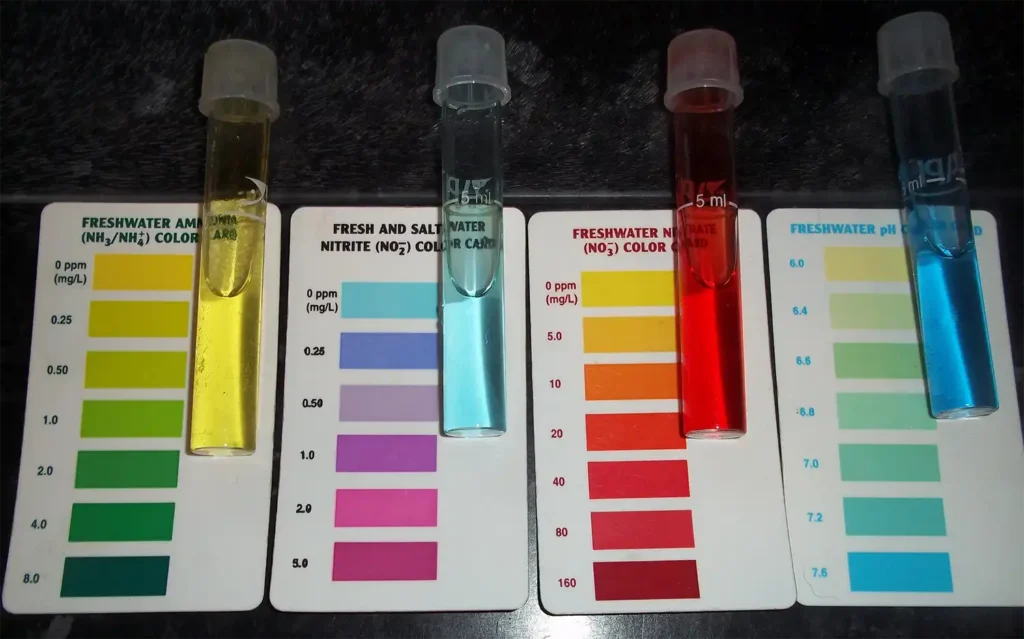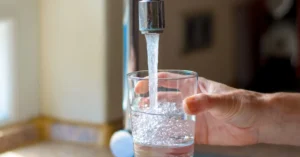Ensuring the safety and purity of your home’s water is crucial for your family’s health. At Ohio Water Testing, we specialize in comprehensive water quality testing to identify and address potential contaminants in your water supply.
Understanding Water Quality Testing
Water quality testing involves analyzing water samples to detect physical, chemical, and biological contaminants. This process is essential for both municipal and private water sources to ensure safety and compliance with health standards.
Key Parameters in Water Quality Testing

Water quality is assessed based on various parameters:
-
Physical Parameters: Turbidity, color, taste, and odor can indicate the presence of suspended solids or organic matter.
-
Chemical Parameters: pH, hardness, chlorine levels, nitrates, and heavy metals like lead or arsenic are measured to assess chemical safety.
-
Biological Parameters: Testing for bacteria such as E. coli ensures the water is free from harmful microorganisms.
Regular testing helps in early detection of issues, allowing for timely remediation.
Importance of Home Water Testing
Even if your water appears clean, it may contain unseen contaminants. Home water testing is vital to:
-
Identify harmful substances like lead or bacteria.
-
Determine water hardness, which affects appliances and plumbing.
-
Ensure the effectiveness of water treatment systems.
Regular testing provides peace of mind and protects your family’s health.
Why the Water Source Matters
The source of your water significantly impacts its quality, safety, and treatment needs. Whether your home uses municipal water, private well water, or water from a natural body (like lakes or rivers), the risks and concerns vary.
-
Municipal Water: Typically treated but may still contain chlorine, fluoride, or contaminants from aging pipelines.
-
Well Water: Untreated and highly susceptible to bacteria, heavy metals, pesticides, and high hardness levels.
-
Surface Water (Lakes/Rivers): Vulnerable to runoff, pollutants, algae, and microbial activity.
Understanding your water source is the first step in effective water quality testing.
Common Contaminants Found in Water
Regular water testing can detect contaminants that are invisible and tasteless but harmful to your health. Here are common water pollutants found in Ohio:
| Contaminant | Potential Source | Health Risks |
|---|---|---|
| Lead | Old pipes and plumbing systems | Developmental issues, kidney problems |
| Arsenic | Natural deposits or industrial runoff | Cancer, skin issues |
| Nitrates/Nitrites | Fertilizers, animal waste | Infant methemoglobinemia (blue baby syndrome) |
| E. coli / Coliform Bacteria | Sewage, animal waste | Stomach cramps, diarrhea, nausea |
| Iron & Manganese | Natural deposits in groundwater | Stains, bad taste, pipe clogging |
| Hardness (Calcium, Magnesium) | Groundwater minerals | Scale buildup, dry skin, appliance damage |
| Chlorine | Municipal water treatment | Bad taste, dry skin, respiratory irritation |
| PFAS / “Forever Chemicals” | Industrial discharge, firefighting foam | Hormonal issues, immune system effects |
Why Water Testing is Important
Still wondering why home water testing is so vital? Here’s why you shouldn’t delay it:
-
Health Protection – Detects dangerous bacteria, chemicals, and heavy metals.
-
Cost Savings – Avoids costly damage to plumbing and appliances caused by hard water.
-
Cleaner Living – Reduces staining on clothing, dishes, and fixtures.
-
Eco-Friendly – Encourages responsible water usage and reduced bottled water waste.
-
Custom Treatment – Helps determine what water treatment system suits your exact needs.
Testing is the only way to truly know what’s in your water.
Water Quality in Ohio, USA (Sample Data Table)
Here’s an overview of typical water quality ranges in Ohio, including private wells and municipal water systems:
| Parameter | Typical Value in Ohio | Recommended Limit (EPA) |
|---|---|---|
| pH | 6.5 – 8.5 | 6.5 – 8.5 |
| Total Hardness | 150 – 400 mg/L | No EPA limit (aesthetic concern) |
| Iron | 0.3 – 1.5 mg/L | < 0.3 mg/L |
| Manganese | 0.05 – 0.5 mg/L | < 0.05 mg/L |
| Nitrates | < 5 mg/L | < 10 mg/L |
| Coliform Bacteria | Detected in some wells | 0 CFU/100 mL (zero tolerance) |
| Lead | 2 – 15 ppb (some hotspots) | < 15 ppb |
| PFAS (Forever Chemicals) | Detected in select counties | < 4 ppt (EPA proposed guideline) |
| Chlorine (Municipal Supply) | 0.5 – 4.0 mg/L | < 4.0 mg/L |
Frequently Asked Questions (FAQs)
1. What is water quality testing?
Water quality testing is the process of analyzing a water sample to detect contaminants such as bacteria, chemicals, heavy metals, and minerals to ensure the water is safe for use and consumption.
2. Why is water testing important for homeowners?
Home water testing helps ensure your drinking and household water is free from harmful contaminants and safe for your family, plumbing, and appliances.
3. How often should I test my home water supply?
Experts recommend testing your water at least once a year, or more frequently if you notice changes in taste, odor, or color.
4. What can a water analysis test detect?
A water analysis can detect pH levels, hardness, iron, manganese, lead, chlorine, bacteria like E. coli, nitrates, arsenic, and PFAS (forever chemicals).
5. How do I know if my tap water is safe to drink?
The only way to confirm safety is through certified drinking water quality testing, which checks for common pollutants and health risks.
6. What is included in a water quality test?
Typical tests include checks for hardness, pH, bacteria, chlorine, heavy metals, sediment, and VOCs (volatile organic compounds).
7. What’s the difference between well water testing and municipal water testing?
Well water testing is crucial because it’s untreated, while municipal water is pre-treated but may still contain residual chemicals like chlorine or PFAS.
8. Do I need different tests for well water and city water?
Yes. Well water testing often includes bacteria, nitrates, and iron; municipal water focuses more on chlorine levels, lead, and other treatment byproducts.
9. How accurate is home water testing?
Professional water analysis services provide highly accurate results and are recommended over DIY kits for precision and reliability.
10. Can water quality change over time?
Yes. Seasonal changes, plumbing corrosion, industrial activity, or nearby construction can affect water quality.
11. What causes hard water?
Hard water is caused by excess minerals like calcium and magnesium in your water supply, often from groundwater sources.
12. Can water testing reveal the cause of bad taste or odor?
Absolutely. Testing can detect sulfur, chlorine, iron, or bacterial contamination—all of which affect taste and smell.
13. How do I know if I need a water softener?
If your water test shows high hardness levels, a water softener is recommended to prevent scale buildup and dry skin.
14. Is well water testing in Ohio different from other states?
Yes. Ohio has specific geological and agricultural factors that can influence groundwater contamination, making well water testing in Ohio essential.
15. How much does a professional water test cost?
Prices vary, but Ohio Water Testing offers free in-home water testing and consultations.
16. Can I use a DIY test kit instead of a professional service?
DIY kits are limited and not as reliable. Professional residential water testing ensures thorough and certified results.
17. Can hard water damage plumbing?
Yes. Over time, hard water leads to limescale buildup, clogging, and wear on fixtures and appliances.
18. What is a PFAS or forever chemical in water?
PFAS are long-lasting chemicals found in some Ohio water systems, linked to serious health risks and detected only through advanced water analysis testing.
19. How long does water testing take?
Basic in-home tests take 30–60 minutes. Lab results for detailed drinking water testing may take 2–5 days.
20. Which areas do you serve for water quality testing in Ohio?
We proudly serve:
-
Painesville
-
Mentor
-
Concord
-
Perry
-
Fairport Harbor
-
Kirtland Hills
-
Kirtland
-
Chardon
-
Willoughby Hills
-
Willoughby
-
Eastlake
-
Willowick
-
Wickliffe
-
Madison
Check more on Water Quality Monitor Network In Ohio





